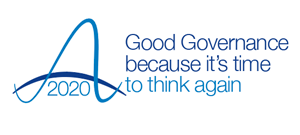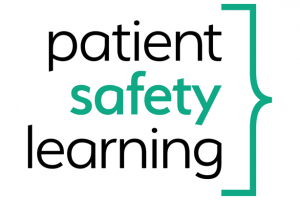Patient safety learning
23 June 2020

Every year, avoidable unsafe care harms and kills thousands of people in the UK, with the NHS estimating that there are 11,000 deaths annually due to patient safety incidents. This causes not only untold physical and emotional damage but it also creates a huge financial burden, with the annual cost to the NHS of unsafe care and litigation standing at close to £5 billion.
It is important that when organisations are considering the workplace as a whole system, safety should be at the core of its design.
Impact of COVID-19
COVID-19 has placed the health and social care system under unprecedented pressure. As well as creating new challenges for patient safety, the pandemic has also magnified existing problems. It has increased the underlying causes of known patient safety issues and distracted attention away from safety initiatives that were having traction and success.
Health and social care organisations have been required to redesign care settings to ensure patients and staff are kept safe from infection. This has involved the introduction of ‘green zones’ and of isolation measures for newly admitted patients who have yet to be tested for the virus.
COVID-19 has also placed significant pressure on staff working on the front line, creating what Professor Maureen Baker has described as an ‘error-provoking context’. Errors are more likely to happen when there are changes to how and where patients are treated and when staff work under physical and emotional pressure.
In these circumstances, reporting errors, understanding their causes and learning from them become even more vital to prevent harm reccurring. However, there are concerning reports about inconsistent approaches to reporting incidents and undertaking investigations during this period, which potentially increases the risk to patient safety.
 Indirectly, the pandemic has had significant patient safety implications for regular health and social care. To meet the needs of COVID-19 patients and to cope with the expected demand at the peak of the crisis, measures were taken to postpone planned screening, tests, elective operations and diagnostic procedures to free up capacity in the system. While we are yet to see the full impact of these delays, they will have significant consequences for the health and wellbeing of patients.
Indirectly, the pandemic has had significant patient safety implications for regular health and social care. To meet the needs of COVID-19 patients and to cope with the expected demand at the peak of the crisis, measures were taken to postpone planned screening, tests, elective operations and diagnostic procedures to free up capacity in the system. While we are yet to see the full impact of these delays, they will have significant consequences for the health and wellbeing of patients.
Pressure on the workforce
COVID-19 has brought to the fore the importance of maintaining the safety of health and social care staff. We have seen an unprecedented focus on this issue by the media, public and politicians, particularly around the lack of supply and changing guidance for the use of personal protective equipment (PPE) and access to testing. Staff have undoubtedly become infected by COVID-19 in their workplaces and some have died.
There is also growing recognition of the impact that the pressure of the pandemic is placing on the workforce. Healthcare staff are working in a more dangerous environment, while also being asked to work in new ways/roles, often undertaking tasks that are unfamiliar to them. Many are also being asked to postpone leave and training over this period.
These circumstances are having a significant impact on morale and wellbeing and can lead to burnout. This could result not only in a decline in performance and increased potential for error and patient safety incidents, but also to longer-term challenges, such as high levels of sickness and an inability to retain staff.
Returning to normal – the challenge
As we move beyond the peak of the pandemic and organisations seek to transition back to normal levels of care, significant challenges lie ahead – and with these come new patient safety issues.
One significant area of concern is how to address the diagnostic and treatment backlog of non COVID-19 care, which was postponed during the crisis. How this is addressed, and how decisions will be made about resources and prioritisation, represents a major logistical challenge. We risk the safety of patients if we do not design safe access to services. We need to prioritise patients with the greatest clinical need and urgency.
Returning to normal – the opportunity
The pandemic also presents us with opportunities to improve patient safety. During the crisis, teams and organisations responded quickly to new ways of working, including using new technology. There has been a more open approach to developing and sharing innovative solutions to problems and overcoming siloed practice. The pandemic gives us a chance to review ways of working and ensure that patient safety is at the heart of our future health and social care structure.
How should boards respond?
It is vital for boards to understand what patient safety challenges their organisations face during the pandemic and, as they plan future services, that they ensure their organisations receive clear metrics to inform decision-making.
Boards need to ensure that:
- their organisations set and monitor patient safety performance and that key decisions are informed by clear metrics
- their organisations support learning from unsafe care, complaints, and patient and staff feedback; there should also be a positive emphasis on sharing learning and improvement so that innovation and safety improvement initiatives are widely disseminated and implemented
- patients and families are actively engaged and informed in the delivery of safe care
- their organisations have clear leadership and governance processes for patient safety, from ward to board
- there is a culture that actively supports staff speaking up, enabling patient safety concerns to be highlighted and addressed. Boards need to champion this and ensure that it is happening in practice, not just in intent.
Patient Safety Learning and GGI will shortly be publishing a board assurance prompt that will explore these issues in greater detail, to support effective board decision-making.
If this bulletin prompts any comments or questions, please contact GGI by calling on 07732 681120 or emailing advice@good-governance.org.uk and/or hello@patientsafetylearning.org.
Helen Hughes
Chief Executive
Mark Hughes
Business and Policy Manager

